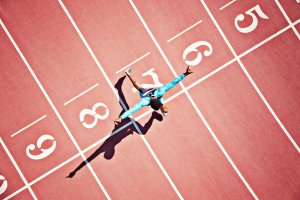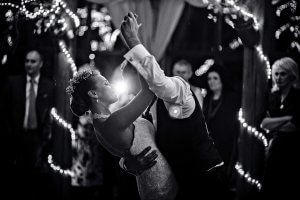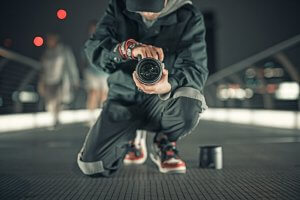Master sports photography: Tips and tricks for spectacular images
If you want to achieve a sport photography that is striking and out of the ordinary, you need much more than a good camera. The essential thing is to learn to anticipate the most exciting moments of each competition and to know how to handle the constant movement of the athletes. To become a good sports photographer and make a living from it, it is essential to have a thorough knowledge of the sport you are capturing. Only then will you be able to foresee the key moves and be ready to immortalise the most intense moments. Because there is one thing that cannot be disputed: the most memorable scenes in sports photography happen in a matter of seconds. And only those who have the experience, the agility and the trained eye will be able to transform them into unique and unrepeatable images.
If you aspire to excel in this demanding speciality of sports photography, today we share with you a series of recommendations that will help you make a difference as a sports photographer.
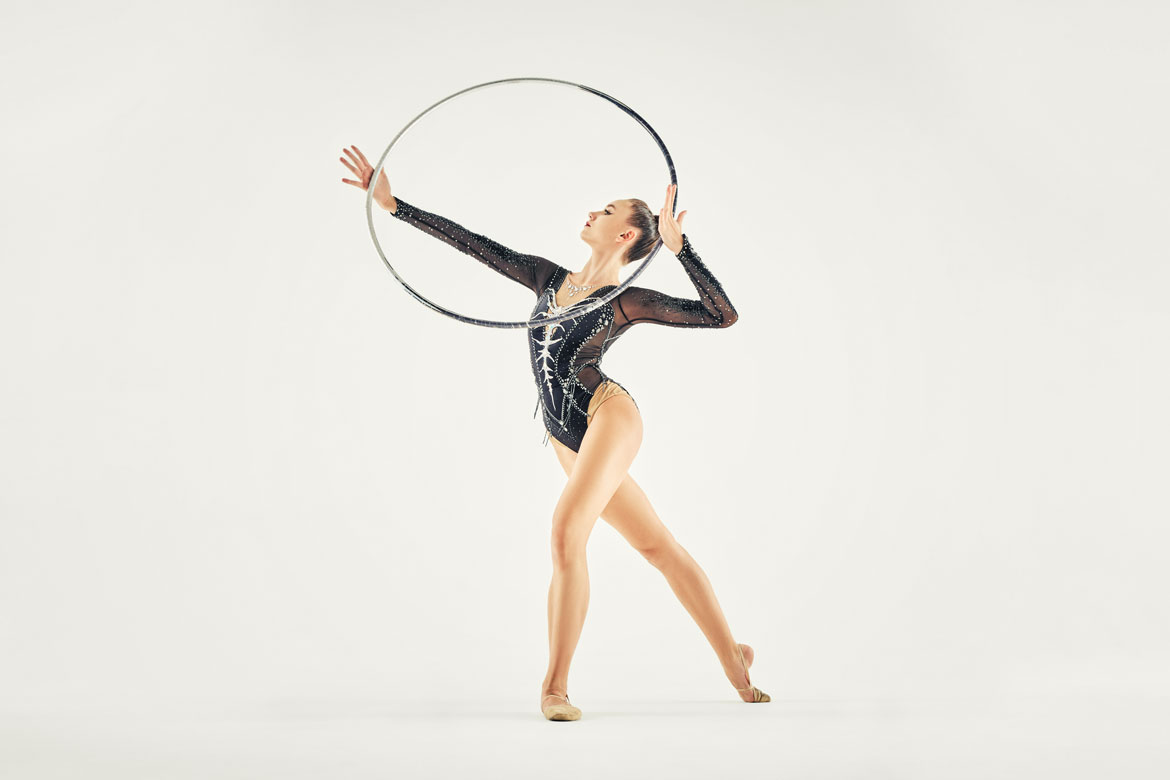
To achieve a truly stunning sports photograph, speed, determination and creativity are your best allies.
Contenido
- Master the art of sports photography with stunning and creative images
- 15 keys to a successful start in sports photography
- 1# Before specialising in one discipline, experiment by photographing different sports
- 2# Research the sport you are going to photograph in depth
- 3# Adjust ISO for brighter images without compromising depth of field
- 4# Capture sports shots from close to the ground for dynamism and originality
- 5# Analyse the pitch in advance of the competition
- 6# Arrive early at competitions to secure top places
- 7# Follow the news in forums and groups to keep up to date with the latest sporting news
- 8# Shoot many more images than you plan to, even when you think you’ve captured the most impactful shots
- 9# Train your peripheral vision to catch all the details without missing anything in the action
- 10# Master burst shooting and autofocus to capture decisive moments with precision and speed
- 11# Be well equipped to withstand long sports competitions all day long
- 12# Experiment with new techniques to take your sports photography to the next level
- 13# Be inspired and learn by watching the great masters of sports photography
- 14# If you are starting out, show your talent to the organisers right from the start
- 15# The secret to success lies in perseverance and tireless practice
- Achieve your goals by capturing a unique and unforgettable type of sports photography
- Arcadina goes with you
Master the art of sports photography with stunning and creative images

If you aspire to make a living from your sports photography, it is essential that you establish a meticulous work routine, where there is no room for improvisation. The first step is to properly prepare your photographic equipment. Depending on the type of sport you are going to cover, you will have to take into account key aspects:
Is it held indoors or outdoors, is it an individual sport or a team competition, will there be a lot of mobility or static moments?
All these variables will determine which cameras, lenses and accessories you need to take with you.
Another essential factor in good sports reportage, especially for outdoor events and if you are just starting out in this discipline, is to know the terrain well before the competition starts. Visiting the venue in advance will allow you to scout the best angles, identify visual obstacles and plan your movements. Also, if you know that other photographers will be attending, arriving early can make all the difference in securing the most advantageous positions. And since you’re getting up early, make the most of those moments beforehand to exercise your creativity. Observe your surroundings calmly and look for elements related to sport: a solitary ball, a leaning bicycle or the empty lane of a swimming pool can become powerful images that provide context and narrative. These photos will not only enrich your portfolio, but can also inspire new ideas for capturing similar moments during real action.
When the competition starts, keep your attention on the athletes, but don’t forget about the surroundings. The crowd, coaches and other supporting players provide unique scenes that complete the visual story of the event. Sometimes a reaction in the stands or a glance between a coach and his athlete can be as powerful as the decisive play.
Keys to the day-to-day life of a sports photographer
One of the keys to standing out as a sports photographer, beyond having a thorough knowledge of the discipline you are going to cover, is to have the agility and fluency to shoot at the right moment, no matter what the conditions. Whether it’s cold, hot, rainy or sunny, your position and your ability to react will be crucial. Because in most sports, the most exciting scenes happen in fractions of a second, and capturing them is what separates a good photographer from the rest.
Your mission as a competition photographer is not just to take pictures, but to be alert to every detail of the event: anticipate moves, foresee reactions and shoot just when the action reaches its peak. Being a professional in this speciality involves more than mastering technique; it also requires commitment, physical effort and a lot of dedication. You’ll have to climb mountains, travel long distances alongside the athletes, or get up early on a Sunday morning to be on the track before the day’s action begins. But if you are truly passionate about sport and photography, all that effort will become part of the pleasure.
In any photographic discipline, it is important to be aware of gestures and movements. But in sports photography, it’s the speed of your camera and the precision of your gaze that make the difference. This is the only way to turn fleeting moments into memorable images.
15 keys to a successful start in sports photography
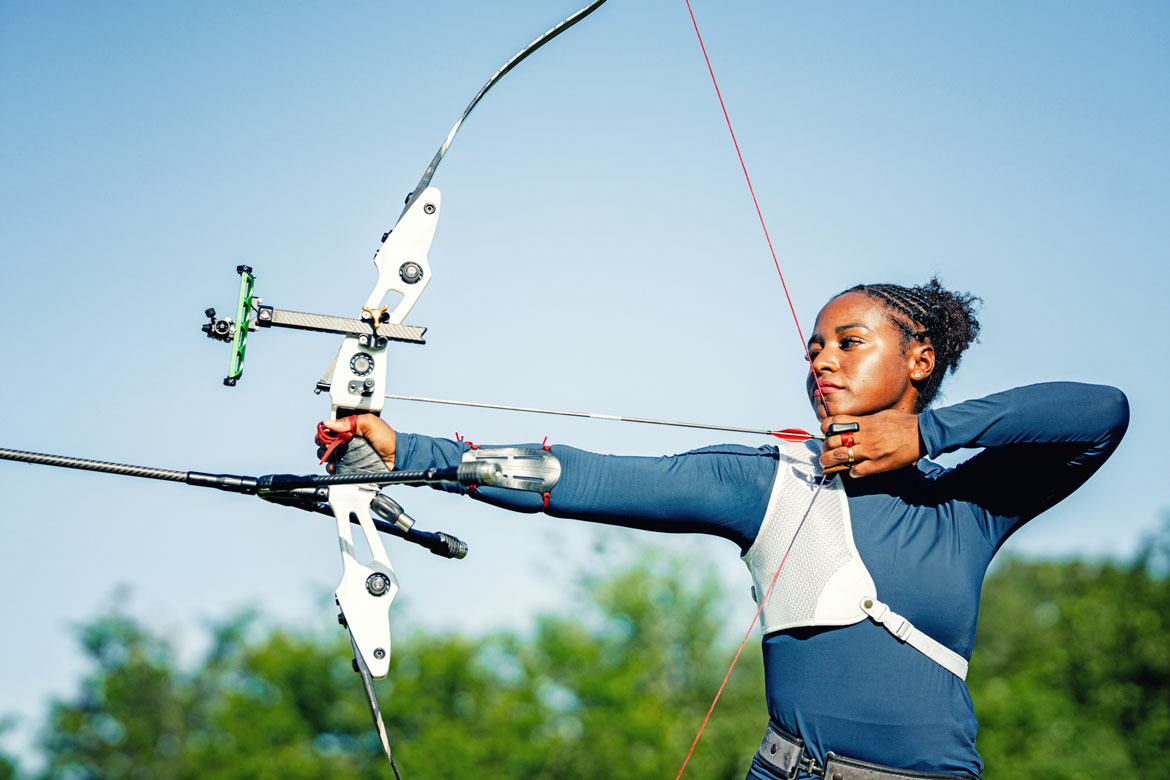
In a sports photography session you can’t miss even the smallest detail. That’s why it’s essential that you go to each competition well prepared: with the right equipment, having studied the terrain beforehand and with your mind set on capturing every moment from the moment the starting gun sounds.
If you’ve been in the world of sports photography for years, you’ve probably already got all of this in your head. But if you are just starting out in this discipline or are thinking of taking the plunge and turning your passion into a professional activity, there are a number of key aspects that you should bear in mind.
Below, we are going to share with you a series of recommendations that will help you take your first steps with confidence, avoid common mistakes and start building a solid and profitable career in the exciting world of sports photography.
1# Before specialising in one discipline, experiment by photographing different sports
Especially when you are starting out in sports photography, it is essential that you try to cover as many events as possible. The more diverse the better. Each discipline will present you with different technical challenges and allow you to develop new skills: photographing an obstacle course in a sports hall is not the same as tackling the changing and demanding environment of a high altitude downhill competition.
Exploring different types of events will help you discover which sports motivate you the most, which ones suit your photographic style and in which environments you feel most comfortable working. This prior experience is key before deciding what type of competitions you want to focus on in a more specialised way.
In addition, to keep abreast of future opportunities, you should keep a close eye on leading athletes, event organisers, federations, clubs, associations and specialised sports media.
2# Research the sport you are going to photograph in depth
It is clear that a competition photographer does not need to be limited to a single sporting discipline. However, it is essential that he or she has a thorough understanding of the dynamics of each sport he or she will be covering. Only then will he or she be able to anticipate key moments, react quickly and not miss any relevant action.
Knowing the rhythm, rules and situations typical of each competition will allow you not only to capture technically correct images, but also to develop more creative and expressive compositions. When you know how a competition unfolds, you can anticipate what is about to happen and position yourself to capture unique moments that convey all the emotion of the moment.
3# Adjust ISO for brighter images without compromising depth of field
ISO is the sensitivity of your camera’s sensor to light. As you increase the ISO value, the sensor becomes more sensitive, allowing you to shoot in low light conditions without having to use slow shutter speeds or wide open apertures. However, raising the ISO also increases digital noise in the image, which can affect the final quality.
So when you’re shooting a competition in low light, such as indoor events or at dusk, you’ll need to find the right balance: an ISO high enough to achieve a clear image, but not so high that noise becomes a problem. This middle ground between clarity and noise is crucial for sharp, well-defined sports photography.
At first, many photographers don’t adjust this setting, preferring to keep the ISO low to avoid noise. But once you gain experience and confidence, we recommend experimenting with different ISO settings. Learning to control it will give you a great advantage in difficult lighting situations and will also allow you to play with depth of field, as a higher ISO can allow you to use smaller apertures and thus achieve more sharpness in more areas of the image.
Mastering ISO is a powerful tool to dramatically improve your sports photography, giving you greater versatility and creative control in every competition.
4# Capture sports shots from close to the ground for dynamism and originality
Using a monopod to support your camera and try low angle shots can make a big difference to your sports photography. By shooting from close to the ground, you’ll not only get a more dynamic and engaging perspective, but you’ll also improve depth of field, which helps to highlight the most prominent athletes in the image. This type of framing adds intensity and a sense of action, making for a much more powerful visual impact.
Before the competition, spend time testing from different positions and low angles. Look carefully at the background behind the athletes to avoid distracting or unaesthetic elements that may detract from the composition. This will avoid unpleasant surprises when reviewing your images after the event.
Also, pay special attention to the horizon. Keeping it level is essential for the photograph to convey stability and professionalism; a crooked horizon can give the impression that competitors are moving out of frame or that the image is unbalanced.
5# Analyse the pitch in advance of the competition
As we have already mentioned, it is essential that you get to know the venue well before the day of the competition. If the event is held in an indoor venue and you have the opportunity to attend several days in advance, take the opportunity to examine the available lighting, identify the areas from which you will be able to take photographs and assess what types of images you will be able to capture from each position. This prior analysis will allow you to plan ahead and avoid setbacks on the day of the event.
In the case of outdoor races, this preparation is even more crucial. Visit the course ahead of time to study each section and determine the best place to position yourself during the race. Observe aspects such as natural light, possible obstacles and the flow of athletes. If the race covers a long distance, also plan how you are going to move so that you can capture key moments: the start, intermediate points and, of course, the finish, which is often one of the most exciting moments.
Good planning of the terrain will allow you not only to be in the right place at the right time, but also to make the most of the surrounding conditions to get stunning and original sports photographs.
6# Arrive early at competitions to secure top places
Another fundamental aspect to take care of, which we have already mentioned, is to arrive well in advance of the competition. This will not only allow you to try different angles and experiment with more creative shots, but will also give you the opportunity to secure a privileged position in front of your fellow photographers.
In addition, arriving early will allow you to capture a series of pre-race images of the participants, moments that often go unnoticed but add great narrative value to your work. Like you, many athletes will arrive with time to prepare and warm up, and this will be the ideal time for more personal, up-close and personal shots: portraits with teammates, interactions with coaches, sponsor endorsements or scenes that reflect pre-competition concentration and excitement.
These complementary snapshots enrich your sports reportage and help you tell a more complete and human story of the event, showing not only the sporting action but also the atmosphere surrounding it.
7# Follow the news in forums and groups to keep up to date with the latest sporting news
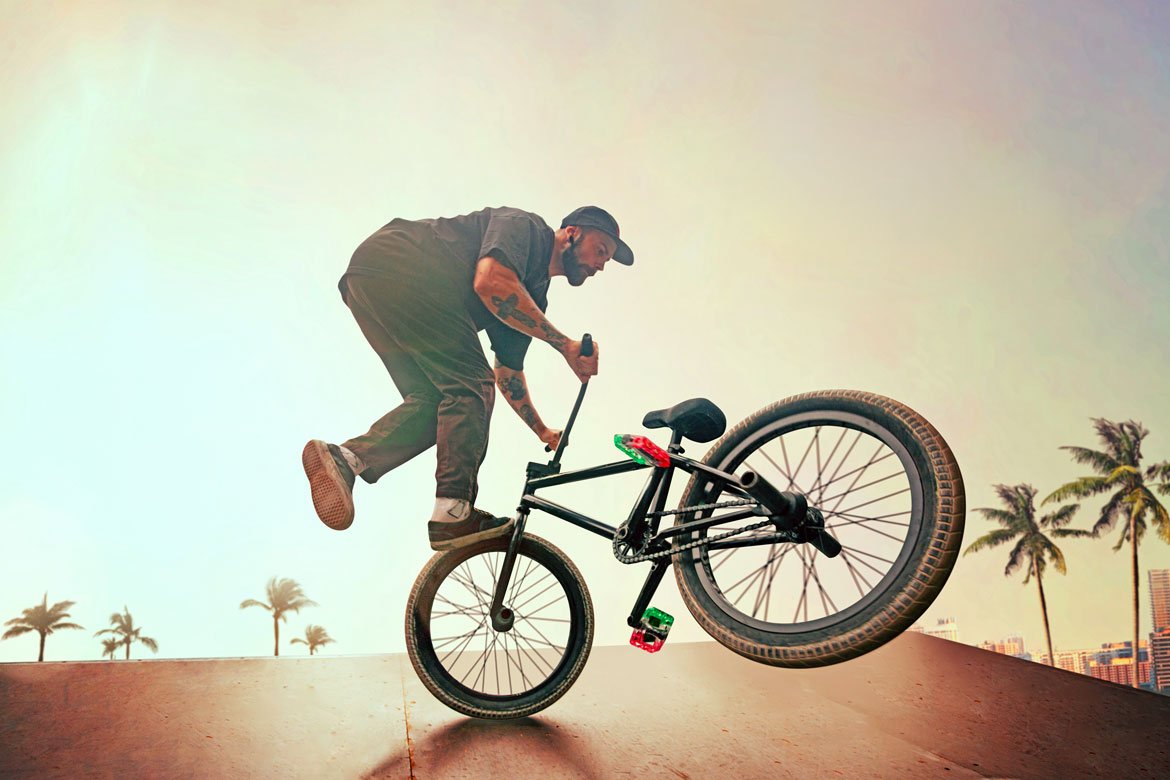
Even if you already have some contacts within the organisation of sporting events, it is essential that you are an active part of various communities, forums and groups where sport and sports photography are discussed. Participating in these spaces will not only keep you informed about the agenda of competitions and activities that are planned throughout the year, but will also give you the opportunity to make new professional connections.
Being part of these communities allows you to share experiences, exchange tips and learn from other photographers and organisers, which can open doors to collaborations, exclusive invitations and interesting projects. In addition, maintaining close contact with industry peers helps to create a network of support and references, which is key to growing and establishing yourself as a sports photographer.
8# Shoot many more images than you plan to, even when you think you’ve captured the most impactful shots
During a sporting competition, there is no time to stop and review the images you have already taken. If you get distracted looking at the screen, you are likely to miss a decisive and unrepeatable moment. That’s why it’s essential that you keep up the pace and don’t stop shooting at any time throughout the competition.
Always keep your attention focused on the subject and shoot continuously. Take advantage of bursts to capture multiple images per second to capture both the fluid movement of the athlete and the action or play that is unfolding. This technique ensures you have several options to choose the best shot and you will also multiply the material available to sell in your online shop or to give to your customers.
Remember that, in sports photography, speed and consistency are key to not missing any crucial moments and to offering a wide range of quality images.
9# Train your peripheral vision to catch all the details without missing anything in the action
When capturing everything that happens at a sporting event, it is essential that you develop the ability to observe the overall scene with one eye, while with the other you keep the camera in focus and shoot at the right moment on the athletes in action. This split attention span will allow you to always be ready to capture both the main action and the details that enrich the visual narrative.
If you manage to not only see, but also capture the entire space surrounding the action in one image, your sports photographs will tell multiple stories simultaneously. You will capture not only the movement and emotion of the athletes, but also the atmosphere, the reactions of the crowd, the tension in the faces of the coaches and other elements that add context and depth to the image. So your photos won’t just be snapshots of action, but true visual chronicles that capture the full essence of the event.
10# Master burst shooting and autofocus to capture decisive moments with precision and speed
One of the must-have settings on your camera is to activate the burst shooting mode. This will allow you, at peak sporting moments, to simply hold down the shutter button and capture a large number of consecutive images until the camera’s temporary memory is full. This feature is essential for not missing a single key moment.
Especially in high-speed sports, where action happens in fractions of a second, shooting in burst gives you the ability to get a full sequence of movement, ensuring that at least some of those shots are in perfect focus and capture the essence of the action. And combined with continuous autofocus, you’ll be able to keep sharp on moving subjects without losing precision, resulting in much more impactful and dynamic sports shots.
Mastering this technique will give you a competitive advantage, as you will be able to choose from several shots the exact moment that best represents the excitement and dynamism of the competition.
11# Be well equipped to withstand long sports competitions all day long
In many cases, sports photographers are faced with long working days in the same location, which can be physically demanding. For this reason, it is essential to have auxiliary equipment that makes the waiting time more bearable and facilitates the performance during the coverage of the event.
A very useful item is a monopod, which allows you to support your camera and reduce arm and back fatigue, especially when using heavy lenses. It is also advisable to carry an equipment belt or shoulder bag where you can keep everything you need close at hand: extra lenses, lenses, memory cards, batteries, a notebook with a pen for quick notes, and any other accessories you consider essential.
Also, if the event is outdoors or in extreme conditions, don’t forget to bring plenty of water, some energy food (such as nuts or bars) and protection from the sun or rain. Being well prepared will not only allow you to work more comfortably, but also to react quickly and effectively to any situation without missing important photo opportunities.
12# Experiment with new techniques to take your sports photography to the next level
If you really want your sports images to stand out and make a mark among other photographers, it is essential that you dare to experiment with new techniques and approaches during competitions. Don’t limit yourself to classic framing: explore unconventional angles, such as ground-level shots, overhead shots or shots from the stands. Take advantage of depth of field, play with background blur or controlled movement (such as panning) to add dynamism to your sports images.
Also, investigate your camera settings thoroughly: control ISO, shutter speed and aperture to suit different light conditions and action. And don’t be afraid to include additional elements in your compositions such as the environment, the expression of the crowd, or details of the sports equipment, so that they provide context and tell a more complete story . Creativity, coupled with technical mastery, is what will turn your photographs into unique and memorable images.
13# Be inspired and learn by watching the great masters of sports photography
Once you already have some experience in sports photography, learning from the leaders in the industry is one of the best ways to keep growing. Observing how great photographers work will allow you to discover new techniques, creative approaches and ways of telling visual stories that you may not have considered yet.
The key is to be inspired, not copied. Study their style, how they compose their images, what moments they capture and how they use light. Then try different techniques and styles yourself, even from photographic disciplines outside sport, such as documentary, portrait or architectural photography. Often, the most innovative ideas come from precisely these cross-genres.
Follow established photographers on social media, analyse their portfolios and interviews, and try to understand what’s behind their technical and creative choices. Over time, you will incorporate what best fits your vision and personality, until you develop a style that sets you apart from the rest.
14# If you are starting out, show your talent to the organisers right from the start
Especially when you are just starting out, we recommend that you use the moments before the competition to approach the organisers and show them your work. This is a key step in making a name for yourself and gaining confidence in the sporting environment. Presenting them with your portfolio, either in physical or digital format, and briefly explaining your experience and photographic approach, can open doors for future collaborations. Organisers value proactivity and professionalism, so don’t hesitate to offer your help or suggest ideas that can improve the coverage of the event.
In addition, establishing a good relationship with them from the beginning will allow you to access better positions during competitions, receive privileged information and, sometimes, be hired for more important or exclusive events. Remember that in the world of sports photography, talent goes hand in hand with networking and the trust you build with the organisers.
15# The secret to success lies in perseverance and tireless practice
Constant practice is essential to achieve high quality sports photography and to excel in the world of competition. In this discipline, which combines speed, technique and creativity, theoretical knowledge is not enough; you need to rehearse over and over again to perfect your technique and style.
Only through repetition and direct experience will you develop a photographic eye capable of anticipating key moments, capturing genuine emotions and capturing the action with a unique approach. Consistency in practice will allow you to break with convention and create images that truly stand out for their originality and visual strength.
Remember that each session is an opportunity to learn: evaluate your mistakes, try new techniques, and little by little, you will build your own style that will differentiate you from the rest and make you a reference in sports photography.
Achieve your goals by capturing a unique and unforgettable type of sports photography
If you want to become a professional photographer and deliver exceptional sports photography, it is essential that you have a thorough knowledge of the field, arrive well prepared, practice constantly and take inspiration from today’s best sports event photographers.
With Arcadina, not only will you have a professional website where you can showcase your best images of recent competitions, but you will also have a private space to share your reports directly with organisers, athletes and sponsors. These private galleries allow your clients to select, buy, download and order prints in professional formats, as well as facilitating the search for images thanks to the integrated artificial intelligence.
In addition, if you are looking to maximise revenue from each day’s competition, an excellent strategy is to make your event photos publicly available for sale through a public gallery. This way, participants, fans and supporters can purchase your digital images as a direct download or order exclusive prints.
Start today to become the sports photographer you always dreamed of being. At Arcadina we offer you 14 days free to try all our services without obligation or permanence, don’t let this opportunity pass you by!
Today we want to share with you the experience of Eli Mora, a great sports photographer who trusts in our business solutions.
>> Eli Mora, sports photographer: “my clients value their private spaces”
And to say goodbye, one last question: which sports photographer do you admire the most? We’d love to hear about it in the comments.
Arcadina goes with you
Fulfil your dreams and develop your career with us. We offer you to try our web service free for 14 days. And with no commitment of permanence.
Arcadina is much more than a website, it is business solutions for photographers.
If you have any queries, our Customer Service Team is always ready to help you 24 hours a day, 7 days a week. We listen to you.



